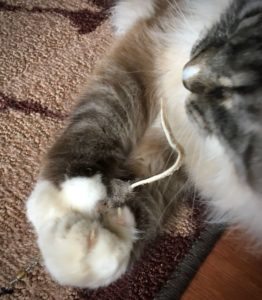The Cat Friendly Home: Scratching Basics
Our soft, cuddly (sometimes) kitties have some sharp ends to them – their claws! When your cat is relaxed, his claws are covered by a sheath of skin. He extends them to grab on to his favorite catnip mouse.
Your cat’s paws are sensitive to touch and pressure – she can feel the vibrations of your footsteps through her feet; she knows by feel just how hard to hold that wiggling mouse.My cat’s sense of touch
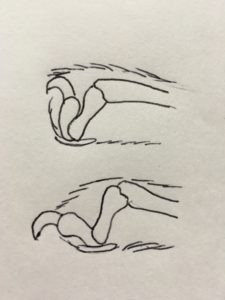
- She uses her claws to hold on to prey so it is best that they be sharp – scratching sheds old nails to allow new, sharper ones to grow in.
- She will scratch defending herself when she feels threatened by another cat, a person, or animal.
- Scratching is also a way of communicating with other cats.
- Scratching is great way to stretch!
YOU MIGHT GET SCRATCHED… when playing with your cat. Remember quick motions trigger his hunting instinct and those claws come out to hold on to the prey – which could be your hand!
- Use toys to play with your kitty, preferably ones that keep your hands and feet out of the “line of fire”. Fishing pole toys such as Da Bird keep you safe while kitty practices his hunting skills
- Play “dead” if you get caught in “clawed embrace”. Once he stops trying to scratch you, you can gently move the paws
YOU MIGHT GET SCRATCHED…if your cat does not want to be handled (self-defense)
- Watch your cat’s body language –What does my cat feel?
- Allow her to decline interactions if she is not in the mood
- Use a towel or blanket if she is upset and you HAVE to get her
Scratching Basics: The Feline Message Board
Pheromones
Pheromones are chemicals that convey “messages” between members of the same species. Your cat has glands in his feet that release pheromones.
Messaging
Your cat scratches a post and deposits pheromones and his own “signature scent” on it. Another cat comes by later and smells the claw marks. The pheromone smell has faded a bit, so the newcomer knows that “Mr. Fuzzy” was here earlier, say around noon.
The Feline Message Board
The free-roaming cat is a solitary hunter. If he is injured, it will be harder to hunt and feed himself. Scratching gives cats a way of signaling each other so that they can avoid meeting and possibly fighting.
The Message Board is active for indoor cats as well as outdoor cats. Having a number of scratching posts around your home can make your cat feel secure – after all, he can check for intruders! In multi-cat homes, it may help cats “time-share” resources.
The Ideal Scratching Post…
- Narrow upright scratching posts that are 3 feet or taller are popular
- Cats will scratch flat surfaces as well as vertical or angled ones.
- Sisal rope, carpet and cardboard are popular materials for scratchers
- Logs with the bark still on may appeal to your cat.
- Preferences can change – some studies showed that older cats choose carpet over sisal rope while younger cats like the sisal rope better.
- OFFER A VARIETY OF SCRATCHERS!
Where to Put Those Scratching Posts!
- near doors and windows (territory marking)
- near the sleeping areas (stretching)
- near the litter box (stretching, marking)
- near the living area where the humans hangout (stretching, marking)
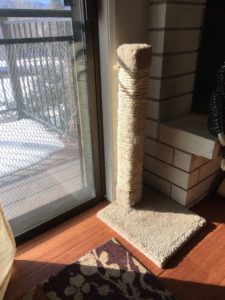
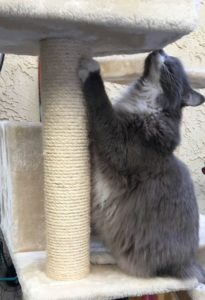
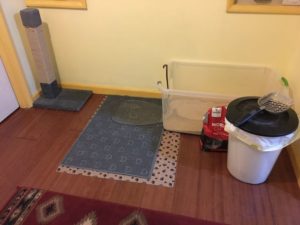
Declawed cats need scratching posts too. They still have glands in their paws that produce pheromones. They appreciate a good stretch and the opportunity to leave scent messages.

